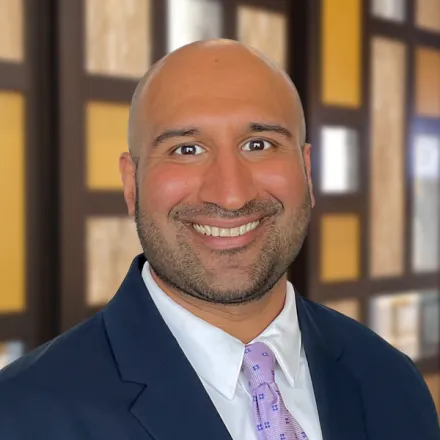

Up front, you may think that building your legacy primarily consists of preparing to hand down wealth and assets to loved ones after you pass. But a more meaningful way to view and plan your legacy is to add yourself into the equation. Focus your idea of legacy on what you do in life now and how you can set your loved ones up to share in and enjoy the benefits in a life that’s lived together.
Here are five tips for setting up the people you care about with the assets, financial know-how and memories they’ll cherish – and thank you for – for decades to come.
1. Teach your children about money and investing early on
If you have children, teaching them good money-management skills – including an understanding of investing – is one of the best legacies you can create. That’s because investments like stocksᶲ and mutual fundsᶲ tend to perform best when held for the long term, and children, of course, have much longer time horizons than adults.
Consider, for example, that the S&P 500 stock index has posted a compound average annual growth rate of 10.7% in the last 30 years. No one can predict future returns, of course, but you can easily see how such a rate of return over a decades-long time horizon could turn a small sum into a large one.
When your kids are old enough, consider buying a few stocksᶲ, or perhaps a mutual fundᶲ or exchange-traded fund (ETF), for them, with their input. Then check on these investments on a regular basis so your children understand the market’s ups and downs and are prepared for these when they’re older.
2. Invest in a registered education savings plan (RESP)
RESPs are a great way to pay for a child’s education, and they’re often underused: Statistics Canada reports that only 53% of families had an RESP account in 2019.
A key advantage of an RESP is that your contributions grow tax-free. And while they are taxable to the student when they receive the funds, they’ll likely only be lightly taxed – if at all – as they will probably be in a low tax bracket.
Moreover, the federal government will match 20% of your contribution per year – up to a maximum of $500 annually and $7,200 over the life of the RESP – under the Canada Education Savings Grant. Pending eligibility and an application, the province will also chip in with the one-time, $1,200 British Columbia Training & Education Savings Grant (BCTESG).
There are other ways to maximize your RESP, too, even if you’re starting later than you’d like. To make sure you’re taking full advantage, contact your financial advisor.
3. Make that family dream happen or start a new tradition
Money is important, of course, but creating lasting memories for your loved ones is also a critical part of legacy-building. If you have extra funds, consider the things you’ve discussed doing as a family and have never gotten around to. Perhaps a family trip is on your list, maybe owning a boat, or investing in a vacation property. The point is to make it a priority – and discuss it with your loved ones as soon as possible.
4. Protect what you have with the right insurance
Insurance is something most people buy and then forget about, especially life insurance. But to give your family maximum peace of mind, you should review your coverage annually (ideally with the input of a financial advisor) to ensure it still matches your circumstances.
How much life insurance do you need? There are different guidelines out there with a common one being 10 times your annual salary – so if you make $125,000 a year, you’ll want to have $1,250,000 of insurance. That way, you’re replacing your salary for up to a decade.
There are other factors to consider. For example, if you have children, you might want to increase your coverage to pay for their education. Or perhaps you want to pay an outstanding debt so your family doesn’t have to worry about it. And if your goal is income replacement over a certain period (10 years, for example), you’ll want to factor inflation into the mix – especially with today’s fast-rising cost of living.
If you are looking for other opportunities to maximize tax efficiencies or seeking a useful estate-planning tool, you might want to consider adding a whole life insurance policy into the mix. Whole life policies offer a number of helpful benefits. First, they provide a cash value component and are not subject to tax as they grow. Values will increase over time and benefits are paid to beneficiaries without tax.
Aside from allowing you to shelter assets, a whole life policy can help you with simplifying your estate plan, avoiding probate costs, and can be useful in complicated family situations such as a blended or multi-generational family. And of course, unlike term policies, whole life insurance policies do not expire. Ask your advisor for details.
Finally, disability insurance and critical-illness insurance may make sense for you, to ensure your family has an income stream if you’re injured or ill and can’t work.
The key takeaway is that, as with so much else about legacy building, everyone’s insurance needs are different, so you’re best to speak with your advisor to make sure you have the right types – and enough of each – to give your family peace of mind.

5. Make a clear will and estate plan – and discuss it with your family
When it comes to wills and estate planning, there are a number of things to keep in mind to ensure you’re maximizing the amount of money you can hand down to your loved ones.
For example, if your wishes include charitable giving, you’re generally best to donate assets – such as stocks or mutual funds – directly instead of selling them first. That’s because selling triggers capital gains tax, while donating them directly gets the estate a tax receipt for the asset’s market value while avoiding capital gains tax.
These are the types of issues your advisor can help you navigate, so it pays to make an appointment once you’ve considered the goals of your plan.
Finally, you’ll want to sit down with your family well ahead of time and discuss your plan, so you can clear up any potential trouble spots, such as how to manage treasured assets like a family cottage, for example. This cuts the odds of family conflict in the future.
A note on segregated funds
You might want to consider looking into an insurance product known as a segregated fund, so-called because it is separated from the general assets of the insurance company.
Managed much like a mutual fund, a segregated fund stands apart for its potential use and benefits as an estate-planning tool. For example, upon the death of the holder, segregated fund assets pass directly to the beneficiary, bypassing all or some estate taxes and probate fees.
They can also be helpful in protecting your beneficiaries’ long-term best interests. Based on how they are set up, segregated funds that are elected to pay out to a beneficiary as an annuity are distributed on an interval basis (almost like a salary or an allowance) as opposed to being allocated in one lump sum. This offers some of the benefits of a trust with less complexity and can help with easing taxes, managing financial responsibility, or other related challenges.
There are other factors to weigh when considering segregated funds – be sure to discuss this option with an insurance or wealth protection specialist.
Expert advice to help secure your legacy
As you build your legacy for now and the future and work towards establishing a solid foundation for your family, there are bound to be changes, opportunities, and questions. Your advisor is here to help, providing expert advice and personalized banking services that can help set you and your family on a lifelong journey to achieving financial wellness. Reach out today to discuss your ideal legacy.

Have a question? Ask an expert
JT Rai Financial AdvisorMutual Funds Investment Specialist
Our team of experienced professionals are here to answer any questions you may have.